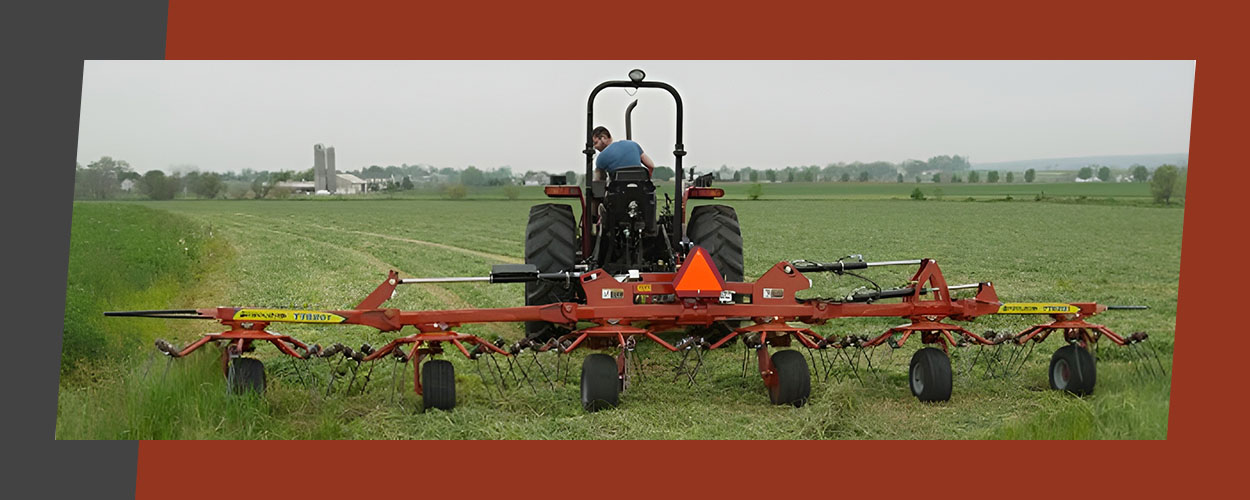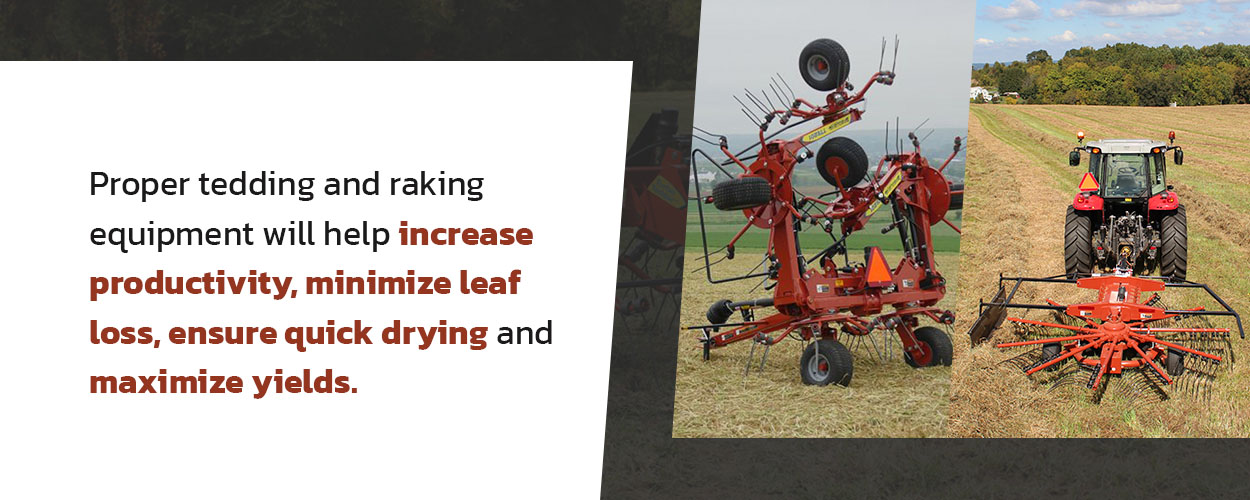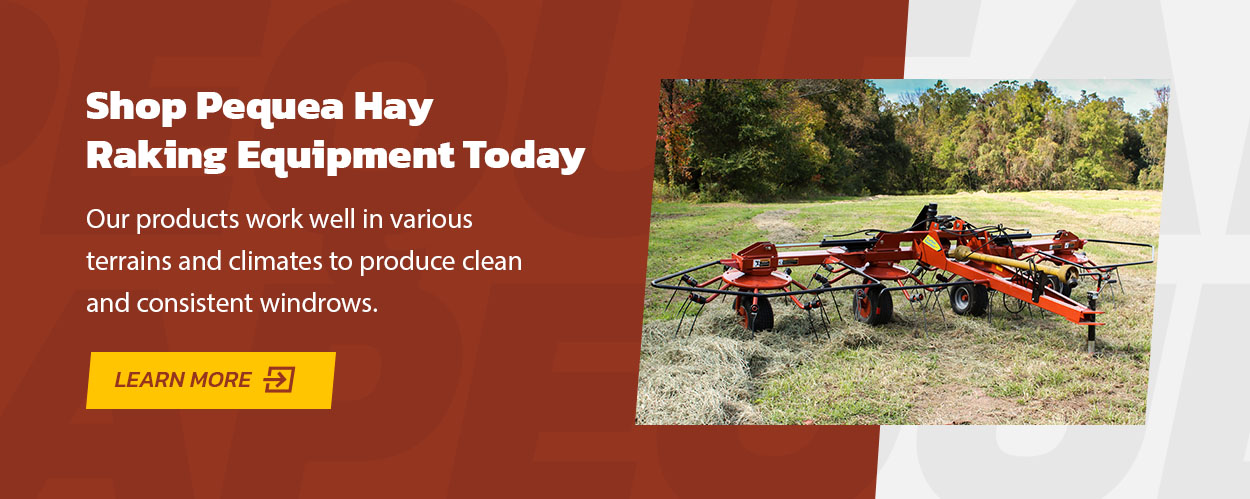Common Hay Raking Issues and Solutions

Hay raking — turning the hay one last time before forming windrows that allow it time to dry before it is baled, combined and rolled — requires precision and diligence. An effective raking process ensures the quality of the bales, reduces harvest losses and helps conserve nutrients. Proper raking also prevents your hay bales from being contaminated by dirt and other debris.
However, the raking process can be complicated, and many farmers make costly mistakes that decrease the quality of their hay bales. Below, we discuss the top hay raking issues farmers encounter and share solutions they can employ to improve the raking process and the quality of their bales.
Common Hay Raking Challenges
The following are the most common hay raking issues that reduce the efficiency and effectiveness of the process.
Lack of Moisture Balance
When raking hay, you must ensure it is neither too wet nor too dry. Raking hay that's too dry increases the chances of the foliage leaves being knocked off the stems. Reducing the leaf-to-stem ratio results in a decrease in forage quality because the leaves are the most nutritious part of the plant.
Raking when the moisture content is too high prevents proper drying and increases hay harvest loss. It also causes heating issues during baling and may result in moldy hay bales. The optimum moisture levels for hay are typically between 14% and 18%. These levels better guarantee proper drying, forage quality and nutrient preservation.
You need a moisture meter to measure the hay's moisture content. You can also use the "twist test," which involves grabbing a fistful of hay on the field and twisting it. If the stems break easily, the hay is cured, but if they bend effortlessly, it's ready for raking and baling.
Raking at the Wrong Time
Many farmers think you can rake at any time of the day. Most make the mistake of raking when the sun is at its peak in the late afternoon. However, at this time, the forage sugar concentrations are highest. Therefore, hay harvesting and raking in the late afternoon impacts hay quality because photosynthesis is ongoing, and energy is wasted on that as opposed to curing and drying.
Instead, raking is best done in the late morning when the dew has dried and the sun has almost reached its peak. At this time, you can preserve the quality of the hay by not tossing the dew to the underside of the windrow. Additionally, raking at this time exposes the newly turned underside to the sun for proper drying and minimizes respirational losses. After raking, you should allow the hay to dry in the sun for at least two hours before baling.
Creating Narrow Swaths
While it may be tempting to create narrow swaths to fit more windrows across the field, you must avoid this. Narrow swaths increase the drying time of the hay and cause uneven drying, as the hay on top dries faster than the hay at the bottom of the pile.
Creating wider swaths allows even exposure of the hay to sunshine and wind. This results in faster drying and minimizes the risk of hay bleaching, which causes a loss of minerals and nutrients.
Using Quality Raking Equipment to Overcome Hay Raking Issues
Following the tips above can solve common raking challenges, but you should also invest in high-quality hay equipment. Proper tedding and raking equipment will help increase productivity, minimize leaf loss, ensure quick drying and maximize yields.
Purchase Tedding Equipment
As we've mentioned, ensuring hay is dry enough — but not too dry — is important before raking. Tedding equipment can help speed up the forage drying process and improve the baling process. It also prevents over-drying or uneven drying to maximize the quality and nutritional value of your hay. Tedders come in handy the morning after your harvest to mix the forage, exposing all the leaves to the wind and sunshine.
Additionally, tedding disperses the hay evenly, increasing the surface area of the swaths while also fluffing the hay to improve airflow and separate any stems that are stuck together. Your hay is ready for raking at least two days after tedding.
Pequea offers various tedders that are suitable for multiple uses. Some of our top tedders include:
- TurboTedders™: These heavy-duty turbo tedders are ideal for efficient heavy hay switching.
- X Series Tedders: These affordable tedders are used to mix, fluff and spread hay on large or small fields.
- Fluffer Tedder: These automatic tedding machines facilitate gentle aeration and faster hay drying.
Invest in Easy-to-Use Raking Equipment
Modern hay raking equipment utilizes advanced engineering and technology to minimize leaf loss, increase harvest productivity and retain hay quality. This equipment provides farmers with speed, precision and high performance. There's a wide variety of modern raking equipment to choose from that vary in speed, production, operation and grit.
The following are the main factors to consider when selecting the best raking equipment for your farm:
- Region and climate: You'll need a rake that suits your region's environment and climate to optimize drying speed and hay quality. Rotary and belt rakes work well in both dry and humid climates. They effectively cut wet crops and drive through hard surfaces.
- Method of operation: The best rake efficiently supports your production and turnover goals. Wheel rakes are easier to operate and lead to a faster raking process, while rotary rakes have a complex operation mechanism but provide cleaner results.
- Desired hay quality: The rake speed and operation determine the quality of hay you get. For example, wheel rakes are more prone to picking up stones and debris in your bales, while rotary and belt rakes make minimal contact with the ground, ensuring fluffy, light and clean windrows.

